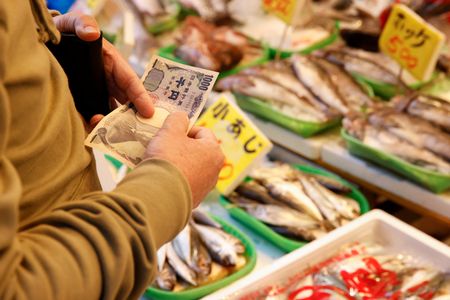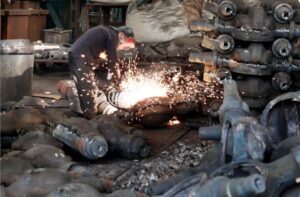By Leika Kihara and Satoshi Sugiyama
TOKYO (Reuters) -Core consumer inflation in Japan’s capital accelerated in May on rising electricity bills but price growth excluding the effect of fuel eased, data showed on Friday, heightening uncertainty on the timing of the central bank’s next interest rate hike.
Separate data showed factory output unexpectedly fell in April, highlighting the fragile state of Japan’s economic recovery and dashing policymakers’ hope that strong corporate activity will offset the weakness in household spending.
“Consumption and output may rebound in April-June from the previous quarter’s weakness, but not as strongly as initially expected,” said Yoshiki Shinke, senior executive economist at Dai-ichi Life Research Institute.
“While the BOJ expects household spending to pick up and underpin the economy, that projection rests on shaky ground given recent signs of weakness in consumer sentiment,” he said.
The core consumer price index (CPI) in Tokyo, a leading indicator of nationwide figures, rose 1.9% in May from a year earlier, matching a median market forecast and accelerating from a 1.6% increase in April.
But the uptick was driven mostly by rising electricity bills, which could hurt already weak consumption and heighten uncertainty about the outlook for Japan’s economy.
A separate index that excludes the effect of both fresh food and fuel costs, closely watched by the Bank of Japan (BOJ) as a broader price trend indicator, rose 1.7% in May from a year earlier, slowing from the previous month’s 1.8% gain.
Private-sector service inflation also slowed to 1.4% in May from 1.6% in the previous month, casting doubt on the BOJ’s view that prospects of rising wages will prod more companies to charge extra for their services.
Adding to the shaky outlook, factory output fell 0.1% in April from the previous month, confounding market expectations for a 0.9% increase, government data showed.
The near term prospects were also less than encouraging, with manufacturers surveyed by the government expecting output to rise 6.9% in May before falling 5.6% in June.
Output disruptions seen in some automakers are likely to have been restored, which will be reflected in May data, a government official briefing reporters on the data said.
But the official warned that manufacturers’ production plans may be revised down due to uncertainty over overseas economies.
Japan’s economy shrank an annualised 2.0% in the first quarter as companies and households reduced spending, casting doubt on the central bank’s view of a moderate recovery.
While analysts expect growth to rebound in the current quarter, a weak yen is weighing on household sentiment by pushing up the cost of imports for fuel and food.
The BOJ ended eight years of negative interest rates and other remnants of its radical monetary stimulus in March as it judged that sustained achievement of its 2% inflation target has come into sight.
BOJ Governor Kazuo Ueda has said the central bank will raise interest rates from current near-zero levels if underlying inflation, which takes into account CPI and broader price gauges, accelerates toward 2% as it currently projects.
The central bank expects rising wages to push up service inflation and keep inflation durably around 2%, a condition it set as a prerequisite to further phase out monetary stimulus.
(Reporting by Leika Kihara and Satoshi Sugiyama; Editing by Himani Sarkar and Shri Navaratnam)





